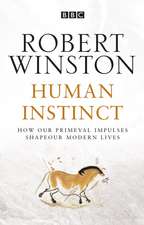When Physics Became King
Autor Iwan Rhys Morusen Limba Engleză Paperback – 7 mar 2005
As recently as two hundred years ago, physics as we know it today did not exist. Born in the early nineteenth century during the second scientific revolution, physics struggled at first to achieve legitimacy in the scientific community and culture at large. In fact, the term "physicist" did not appear in English until the 1830s.
When Physics Became King traces the emergence of this revolutionary science, demonstrating how a discipline that barely existed in 1800 came to be regarded a century later as the ultimate key to unlocking nature's secrets. A cultural history designed to provide a big-picture view, the book ably ties advances in the field to the efforts of physicists who worked to win social acceptance for their research.
Beginning his tale with the rise of physics from natural philosophy, Iwan Morus chronicles the emergence of mathematical physics in France and its later export to England and Germany. He then elucidates the links between physics and industrialism, the technology of statistical mechanics, and the establishment of astronomical laboratories and precision measurement tools. His tale ends on the eve of the First World War, when physics had firmly established itself in both science and society.
Scholars of both history and physics will enjoy this fascinating and studied look at the emergence of a major scientific discipline.
When Physics Became King traces the emergence of this revolutionary science, demonstrating how a discipline that barely existed in 1800 came to be regarded a century later as the ultimate key to unlocking nature's secrets. A cultural history designed to provide a big-picture view, the book ably ties advances in the field to the efforts of physicists who worked to win social acceptance for their research.
Beginning his tale with the rise of physics from natural philosophy, Iwan Morus chronicles the emergence of mathematical physics in France and its later export to England and Germany. He then elucidates the links between physics and industrialism, the technology of statistical mechanics, and the establishment of astronomical laboratories and precision measurement tools. His tale ends on the eve of the First World War, when physics had firmly established itself in both science and society.
Scholars of both history and physics will enjoy this fascinating and studied look at the emergence of a major scientific discipline.
Preț: 291.31 lei
Nou
Puncte Express: 437
Preț estimativ în valută:
55.76€ • 60.59$ • 46.87£
55.76€ • 60.59$ • 46.87£
Carte tipărită la comandă
Livrare economică 21 aprilie-05 mai
Preluare comenzi: 021 569.72.76
Specificații
ISBN-13: 9780226542027
ISBN-10: 0226542025
Pagini: 288
Ilustrații: 30 halftones, 12 line drawings
Dimensiuni: 152 x 229 x 20 mm
Greutate: 0.43 kg
Ediția:1
Editura: University of Chicago Press
Colecția University of Chicago Press
ISBN-10: 0226542025
Pagini: 288
Ilustrații: 30 halftones, 12 line drawings
Dimensiuni: 152 x 229 x 20 mm
Greutate: 0.43 kg
Ediția:1
Editura: University of Chicago Press
Colecția University of Chicago Press
Notă biografică
Iwan Rhys Morus is a lecturer in the Department of History of Science at Queen’s University, Belfast. He is also coauthor of Making Modern Science, forthcoming from the University of Chicago Press.
Cuprins
List of Illustrations
1. Queen of the Sciences
2. A Revolutionary Science
3. The Romance of Nature
4. The Science of Showmanship
5. The Science of Work
6. Mysterious Fluids and Forces
7. Mapping the Heavens
8. Places of Precision
9. Imperial Physics
Notes
Bibliographic Essay
Index
1. Queen of the Sciences
2. A Revolutionary Science
3. The Romance of Nature
4. The Science of Showmanship
5. The Science of Work
6. Mysterious Fluids and Forces
7. Mapping the Heavens
8. Places of Precision
9. Imperial Physics
Notes
Bibliographic Essay
Index















